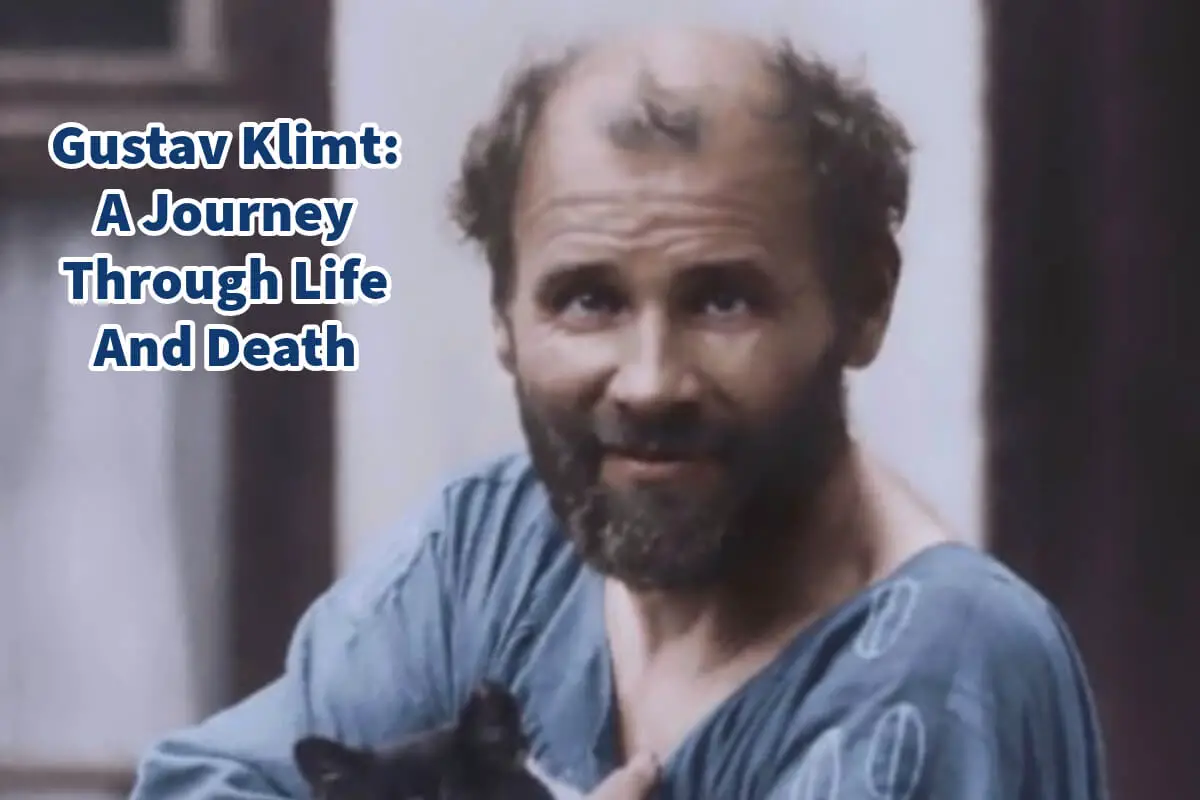Gustav Klimt, an Austrian symbolist painter, left an indelible mark on the art world with his unique style and daring thematic choices.
His journey, from a modest beginning to becoming one of the most celebrated artists of his time is as fascinating as his artwork. This exploration delves into Klimt’s life, significant works, and profound impact on the art world, culminating in his masterpiece, “Death and Life.”
Table of Contents
- Gustav Klimt – Early Life And Rise To Prominence
- Major Artistic Milestones Of Gustav Klimt
- Gustav Klimt – Impact And Legacy
- The Final Years And Death
- Related Questions
Gustav Klimt – Early Life And Rise To Prominence
Born in 1862 in Baumgarten, near Vienna, Klimt was the second of seven children in a struggling family. His father, Ernst Klimt, was a gold engraver, which perhaps influenced Klimt’s later fascination with gold leaf in his paintings. Despite financial hardships, Klimt’s artistic talent was evident early on.
Education And Early Career
Klimt’s formal art education began at the Vienna School of Arts and Crafts at 14. Here, he honed his skills in architectural painting, initially conforming to the academic standards of the time.
He, along with his brother Ernst and their friend Franz Matsch, formed a team known as the “Company of Artists,” which achieved considerable success in decorating public buildings, including the Burgtheater in Vienna, a pivotal early project.
The Vienna Secession Movement
Klimt’s style evolved as he grew increasingly disillusioned with the traditional art scene. In 1897, he played a central role in founding the Vienna Secession, a group that sought to break away from the conservative Academy of Fine Arts.
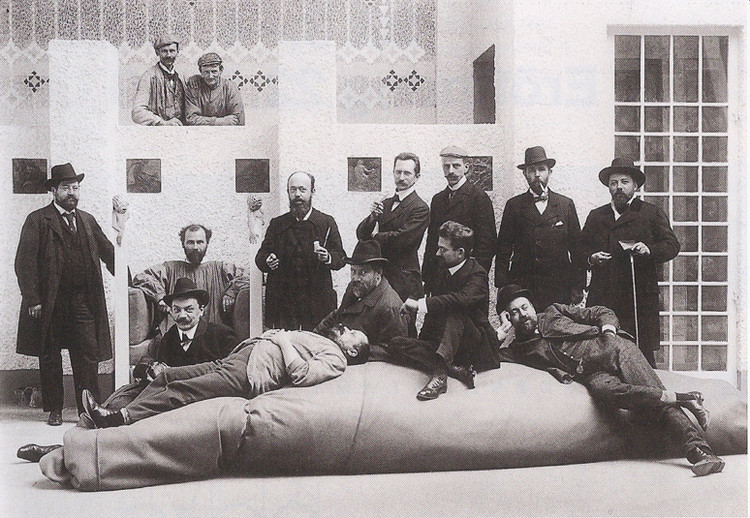
The Secession movement championed artistic freedom and brought new, often controversial, ideas to the forefront of Austrian art.
Major Artistic Milestones Of Gustav Klimt
Klimt’s career is marked by several significant works that challenged the era’s norms and showcased his evolving style.
The “Golden Phase”

Perhaps the most famous period in Klimt’s career was his “Golden Phase,” influenced by Byzantine mosaics he saw during a trip to Italy. This phase produced some of his most iconic works, including “The Kiss” (1907-1908) and “Portrait of Adele Bloch-Bauer I” (1907).
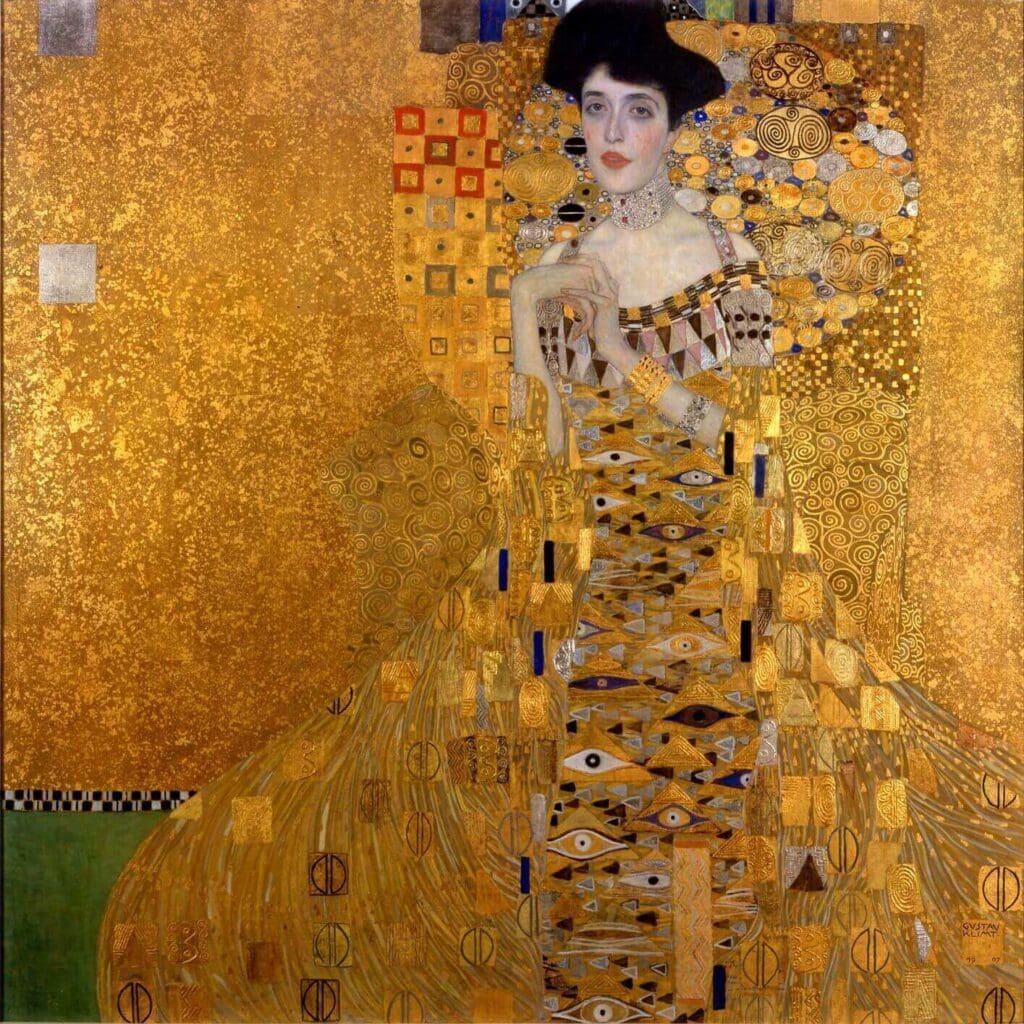
These pieces are renowned for their lavish use of gold leaf and intricate patterns, creating a mesmerizing blend of realism and symbolism.
The Faculty Paintings Controversy
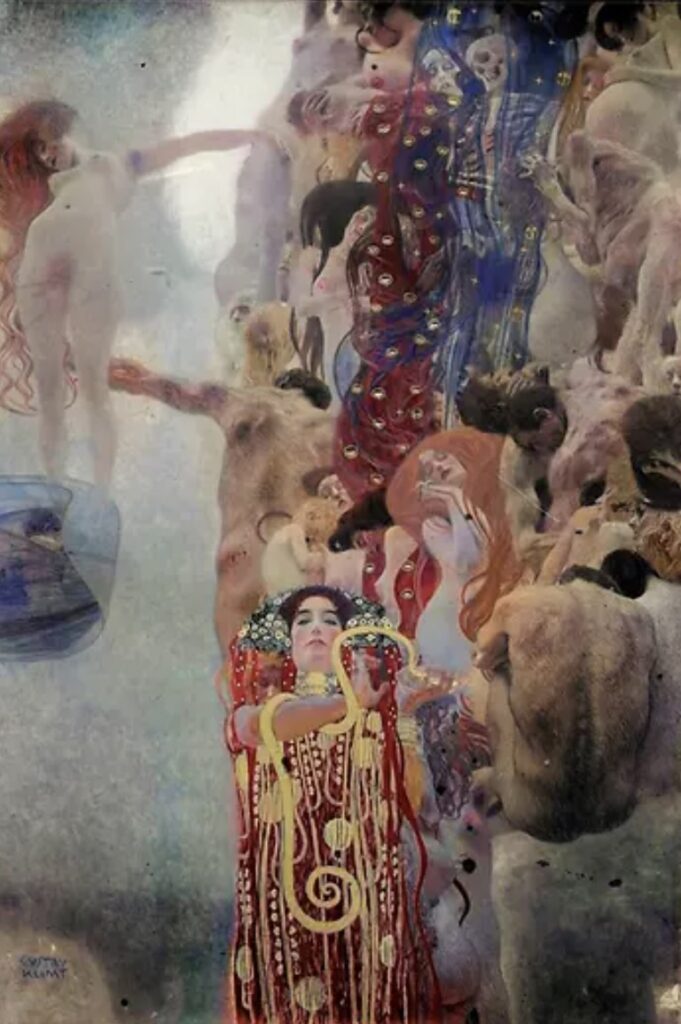
Klimt faced significant controversy with his “Faculty Paintings” for the University of Vienna. These works, including “Philosophy,” “Medicine,” and “Jurisprudence,” were criticized for their eroticism and unconventional symbolism.
The outcry was such that Klimt eventually withdrew from the commission, a pivotal moment that marked his departure from public commissions.
“Death and Life”
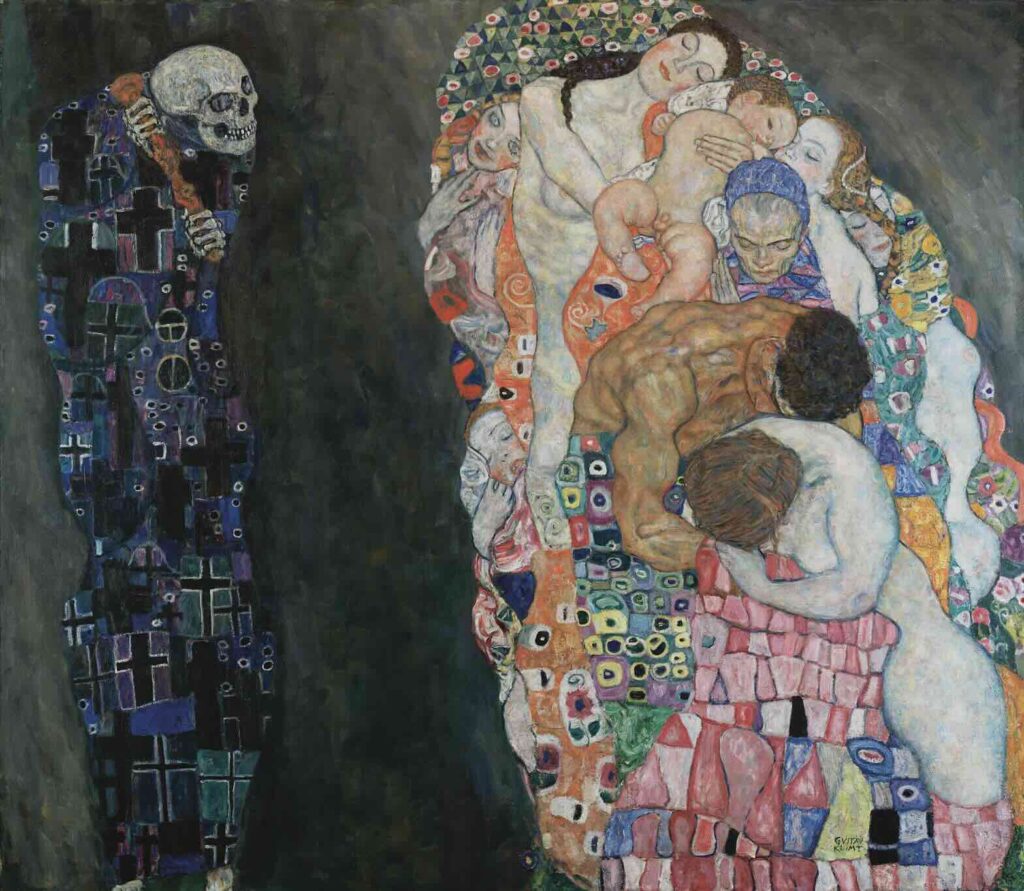
“Death and Life,” completed in 1915 and later reworked in 1916, is one of Klimt’s most profound works. This painting, showcasing the eternal struggle between life and Death, encapsulates Klimt’s symbolic and allegorical style.
The grim figure of Death faces the vibrant, life-filled group with a haunting gaze, symbolizing the constant presence of Death. This work, rich in symbolism, showcases Klimt’s fascination with the cycle of life and his unique ability to blend beauty with existential contemplation.
Gustav Klimt – Impact And Legacy
Klimt’s work had a lasting impact on the art world. His bold use of color, intricate patterns, and exploration of themes like sexuality, regeneration, and Death were revolutionary for his time. Klimt’s influence can be seen in the works of Egon Schiele and Oskar Kokoschka, among others, and he is often regarded as a bridge between traditional and modern art in Austria.

Relationship With The Art Nouveau Movement
While Klimt is often associated with the Art Nouveau movement, his relationship with it was complex. He shared the movement’s interest in natural forms, eroticism, and breaking free from artistic norms, but his work remained distinctively personal, never fully conforming to any single style or movement.
The Final Years And Death
The later years of Klimt’s life saw him withdrawing from the public eye. He continued to paint, but fewer works from this period have survived. Klimt’s life came to an abrupt end in 1918 when he suffered a stroke and pneumonia, complications related to the influenza pandemic of 1918. His Death marked the end of an era, but his legacy continued to inspire and challenge the art world.
Posthumous Recognition
Klimt’s work gained considerable posthumous recognition. His paintings, especially from his “Golden Phase,” have achieved iconic status. “Portrait of Adele Bloch-Bauer I” became one of the most expensive paintings ever sold when purchased for $135 million in 2006.
Gustav Klimt’s journey from a struggling artist in Vienna to an art world icon is a testament to his extraordinary talent and vision. His bold choice of subject matter and style paved the way for modern art. “Death and Life,” a masterpiece encompassing the essence of his work, remains a poignant representation of Klimt’s enduring fascination with life’s complexities.
Klimt may have left the world over a century ago, but his art continues to live, breathe, and inspire.
Anita Louise Art is dedicated to art education, great artists, and inspiring others to find and create their art. We love art that uplifts and inspires. #ArtToMakeYouSmile! #ArtToMakeYouHappy!
If you want to see any of my art, you can find out more by clicking here. If you are interested in what inspires me and my paintings, you can discover more by clicking here.
We have a free newsletter and would love you to be part of our community; you can subscribe to the newsletter by clicking here. If you have any questions, I would be happy to talk to you. You can reach me, Anita, by clicking here.
Subscribe to our Anita Louise Art YouTube Channel, filled with great videos and information by clicking here.
Join us for our podcast “5 Minutes With Art.” Spend just 5 minutes a week with us to discover and learn about great art and artists. You can find out more about our podcast by clicking here.
Related Questions
Gustav Klimt Paint – What Paints Did Gustav Klimt Use?
Gustav Klimt’s distinctive style is instantly recognizable, characterized by intricate patterns, symbolic themes, and lavish ornamentation. Gustav Klimt employed various paints and techniques to bring his visions to life. Read on as we delve into the paints that Gustav Klimt used to create his masterpieces, providing insights into his artistic process and choices.
By clicking here, you can learn more by reading Gustav Klimt Paint – What Paints Did Gustav Klimt Use?
Gustav Klimt’s Paintings: An Intimate Glimpse Into His Genius
Gustav Klimt is widely regarded as one of the most influential artists of the 20th century. His innovative and daring approach to art and unique style and vision have made him an icon in modern art. Klimt’s paintings are celebrated for their sensuality, symbolism, and intricate details, which have captivated audiences for over a century.
By clicking here, you can learn more by reading Gustav Klimt’s Paintings: An Intimate Glimpse Into His Genius.
The Timeless Legacy Of Gustav Klimt’s Paintings
Gustav Klimt was a groundbreaking Austrian artist whose work continues to captivate audiences worldwide. His bold and innovative approach to art and his use of symbolism and sensuality have made him one of the most iconic artists of the modern era. Klimt’s legacy has profoundly influenced the art world and continues to inspire artists today.
By clicking here, you can learn more by reading The Timeless Legacy Of Gustav Klimt’s Paintings.

